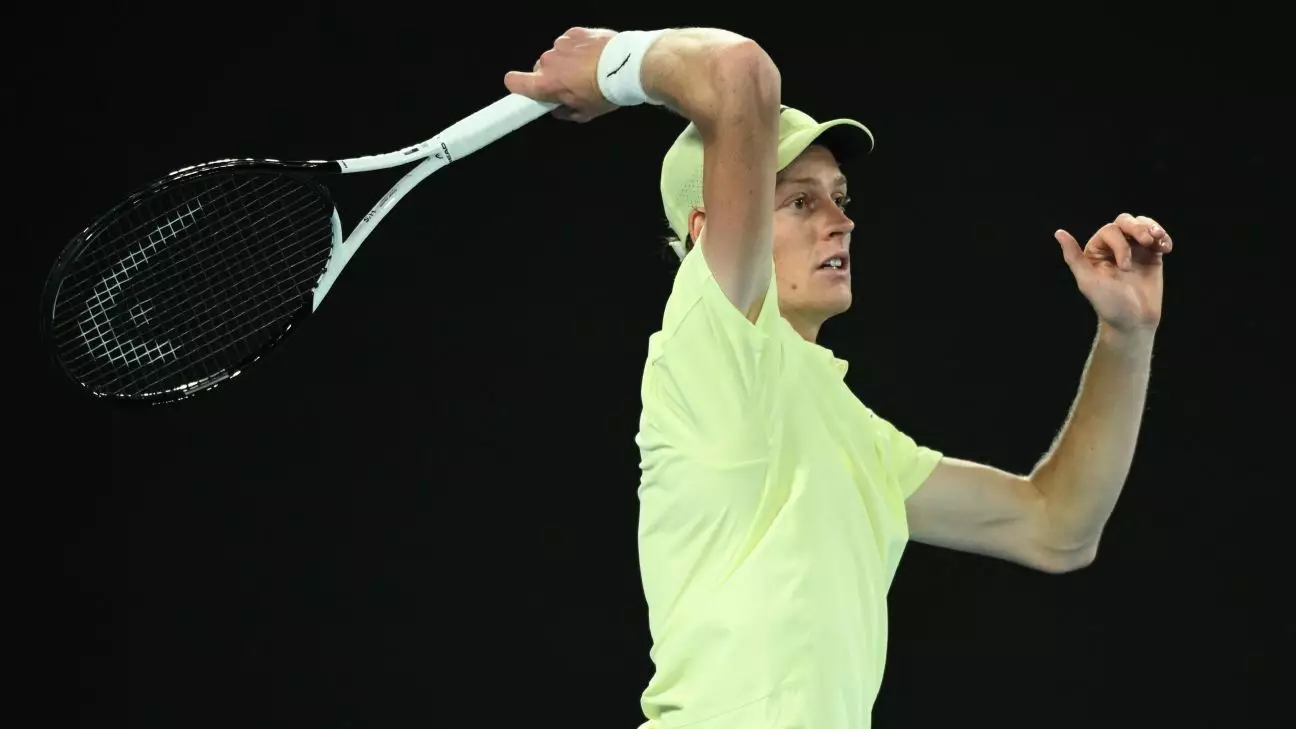The recent doping scandal involving Jannik Sinner has sparked a groundbreaking wave of self-reflection within the world of tennis. As the 23-year-old star edges towards the conclusion of his three-month suspension for doping, a clarion call for change echoes through the courts. Sinner’s case is a potent reminder of the looming threat of contamination, leading many players to directly reach out to anti-doping organizations in search of guidance. This is not merely about a singular incident; it’s about reshaping how players perceive doping regulations and their own health safety protocols.
Sinner’s situation unveiled the complexities surrounding the use of medicines and treatments in sports. He agreed to a settlement with the World Anti-Doping Agency (WADA), acknowledging that trace amounts of clostebol were introduced into his system through massages administered by his physiotherapist. However, the fallout from this case has raised unsettling questions; how many players could unwittingly find themselves in a similar predicament? The International Tennis Integrity Agency (ITIA) has reported a noticeable uptick in inquiries from players seeking assistance on how to avoid positive tests stemming from accidental exposure. It is evident that, in a sport where success is often measured by a razor-thin margin, the urgency to ensure an untainted environment is paramount.
Controversy and Perception in the Spotlight
As the dust settles on Sinner’s case, the tennis community is polarized by contrasting opinions. World-renowned players like Novak Djokovic and Nick Kyrgios have vehemently criticized how the case has been managed, hinting at preferential treatment. Djokovic expressed his discontent with being left „in the dark,“ revealing an unease that punctures the unity often boasted within the sport. Kyrgios took it a step further, branding the situation as „disgusting,“ illustrating that even the inner sanctum of the player community is rife with suspicion and dissent.
Notably, Serena Williams’ commentary reignited the conversation around fairness and punishment within the sport. Her claims that she would have faced a far harsher penalty had she engaged in similar circumstances serve as a potent critique of the existing disciplinary framework. It raises the question: Is there an implicit bias in how such cases are handled depending on a player’s stature or reputation? The ITIA maintains that every case is based on evidence and fact, devoid of influence from a player’s name or rank. However, whether or not that assertion holds true remains a matter of intense debate within the more vocal factions of the tennis world.
The Road Ahead for Sinner and His Rivals
Despite the turmoil surrounding him, Jannik Sinner has persisted in his career, securing notable titles even during his suspension. His resilience has been commendable, suggesting a fortitude that could define his legacy. As he prepares for his return in Rome, with aspirations aimed at the upcoming French Open, he acknowledges that re-establishing his rhythm will be a challenge. “It certainly won’t be easy for me,” Sinner admits, hinting at a mental hurdle that transcends the physical act of playing tennis.
Spanish legend Rafael Nadal weighed in on the conversation, advocating for Sinner’s right to focus on his game while also acknowledging that the scandal cast a shadow on the sport. Nadal’s assertion that „accidents happen“ suggests a level of compassion and understanding, embodying the supportive spirit that champions within the sport can exhibit towards one another in times of distress. Yet, it begs the question: how should athletes define the boundary between rigorous training and the risks associated with new medications and therapies?
As Jannik Sinner’s journey unfolds, the tennis world finds itself at a crossroads, grappling with the implications of doping, accountability, and the integrity of the sport. His case has amplified discussions that extend beyond mere rules into a realm where player safety, education, and systemic fairness must converge. The lasting impact of this scandal may very well dictate the trajectory of anti-doping efforts and the broader narrative of player welfare in professional sports. In a landscape replete with uncertainty, one thing remains clear: the quest for truth and fairness must prevail in the game.


Napsat komentář